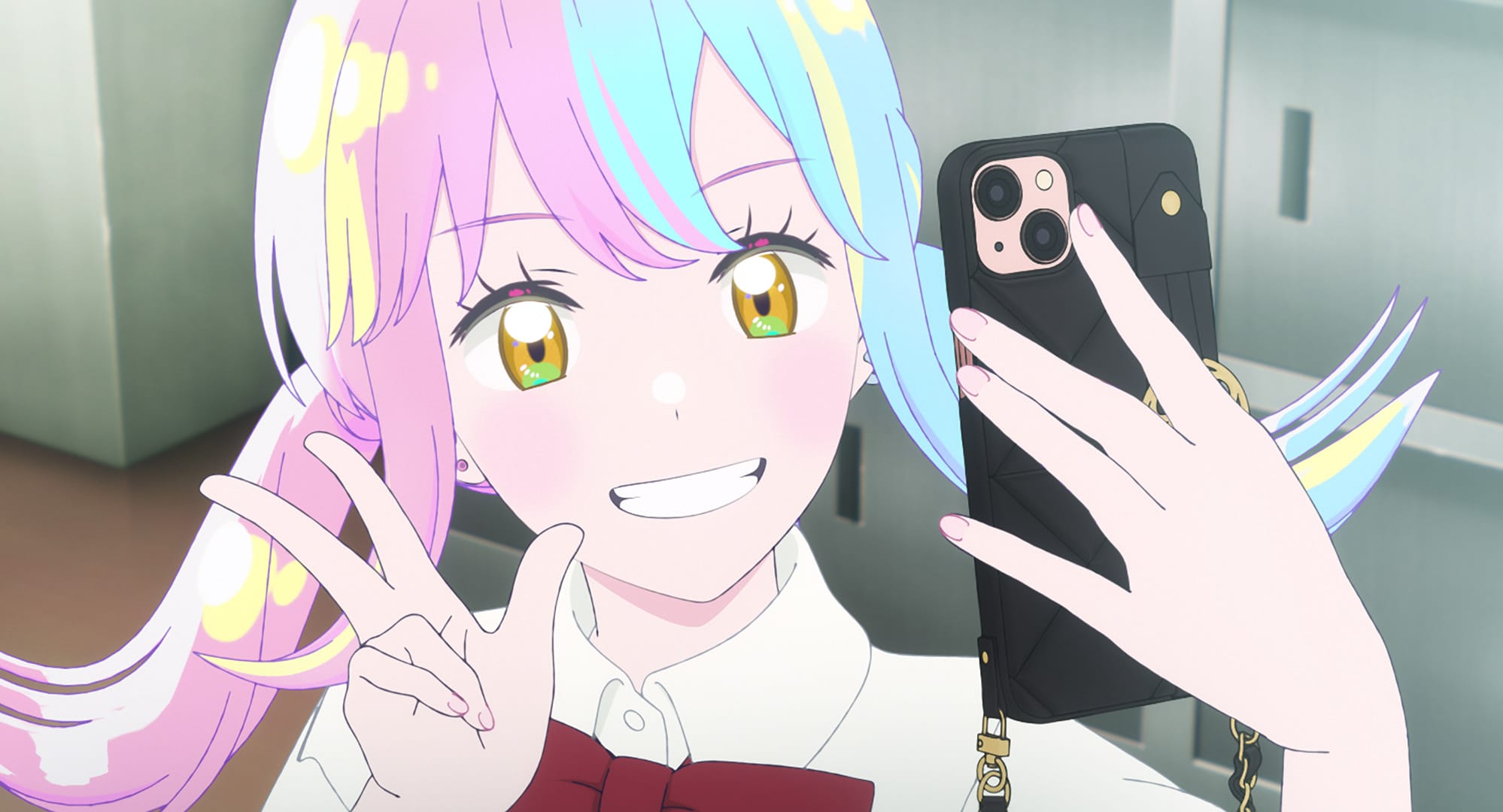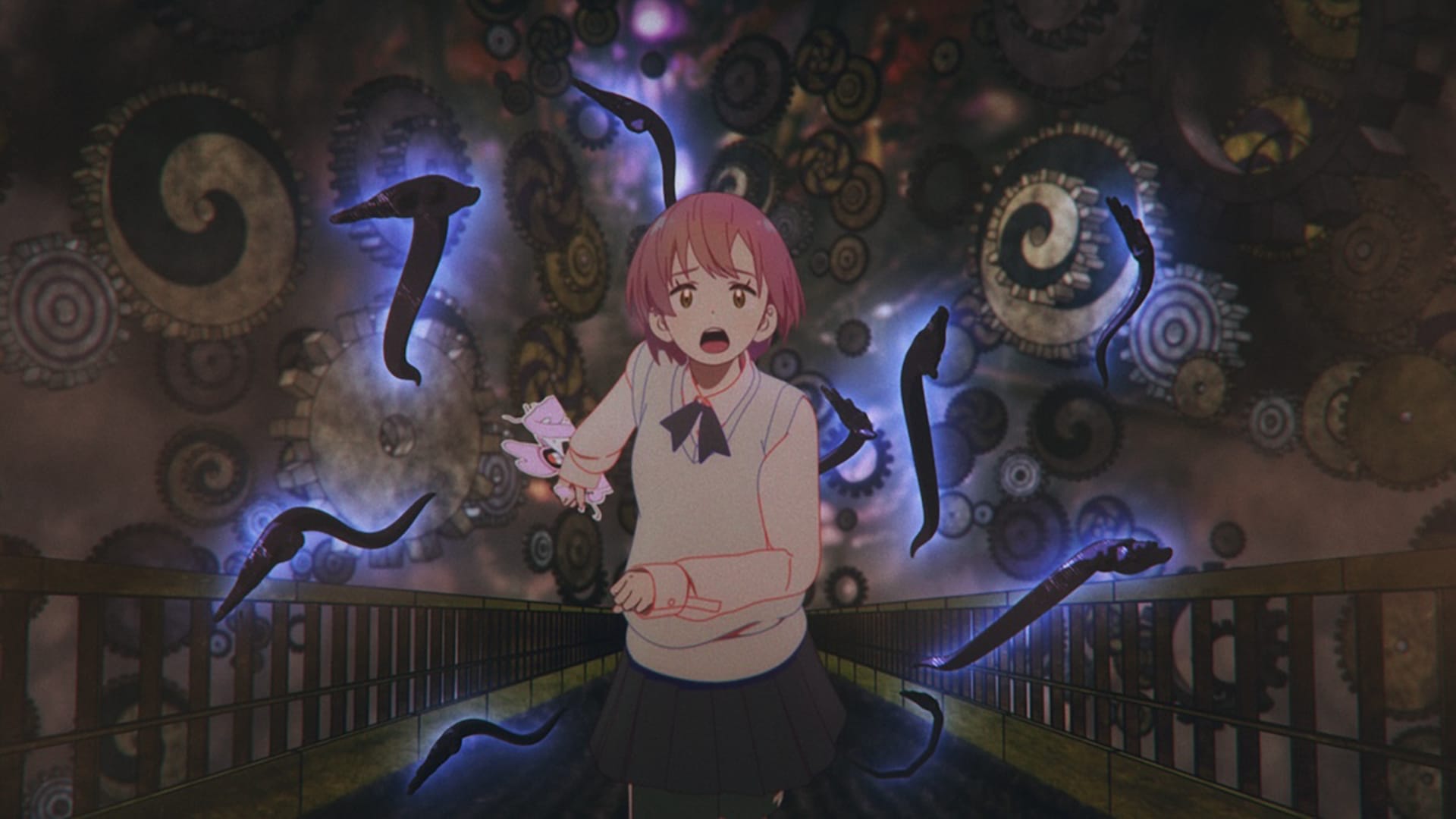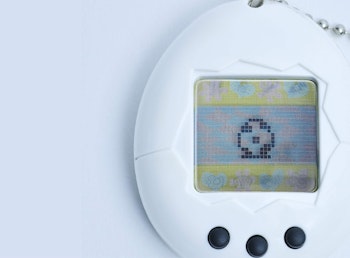
“These kids are always on their damn phones” could be the easy, dismissive conclusion to make whenever any older director decides to create a movie about the perils of smartphone usage, likely spoken by an old man shaking their fist in the direction of the garden those same young people will likely never afford. Shoji Kawamori’s Labyrinth (迷宮のしおり, Meikyu no Shiori), the director’s first original feature-length animation after a lucrative decades-long career working on some of the biggest franchises like Macross, could easily have done precisely this. While often blunt in his broader messaging, it’s a genuine, universal message on human connection that brings the film together to something brash but ultimately entertaining.
Shiori Maezawa (played by SUZUKA from pop-group Atarashii Gakko!, who also provide the film's theme song) is a teenager without the confidence to truly live for herself in her own life. Growing up, she was pressured by her father to inherit the dojo but stopped because it made her stand out from others as she bulked up. Her closest friend is her polar opposite, the “natural-born influencer” Kirara Kurashina (Aoi Ito), with the confidence she lacks and an online platform to boot. When the two made a video as young kids for social media, it was Kirara who got the attention, while Shiori got no more than a handful of likes by comparison. Still, they care for one another, remaining friends and dancing as one.
One time, recording a short video amidst shipping crates, Shiori falls and cracks her phone, and Kirara posts the embarrassing fall and it goes viral. Annoyed, she rants on her secondary account about it, until her phone cracks and traps her in an alternate version of her home in Yokohama while an alternate version of herself acts up in the real world and becomes a social media star of chaos in her stead. She searches for a way out of this smartphone labyrinth concocted in this deserted Yokohama, in the hope to avoid her life being ruined by this unknown persona running her body.
Our lives live on our phone these days, and the way phones have transformed society across the last forty years is a sight to behold. It was prohibitively expensive to even own something that wasn't attached to the wall of your home in the 1980s, nowadays if you want to accurately portray a flashback to a character’s childhood it’s impossible not to feature these pre-teens intimately familiar with a smartphone by the age of six. It’s not just their prevalence, either, but how these devices are now used. Not only do we rely on them to communicate, those without often being ostracized. Government IDs, bank accounts, QR code restaurant ordering, and much more live on these pricey pocket screens.
They’re at times an escape, but they’re also an extension of ourselves. Never mind that, they’re a second person, more pristine through the lens of scrolling video than could ever exist in the real world. A broken phone is not just a nuisance, it’s quite literally the end of the world, our connection to it and that side of ourself severed. Which is exactly the issue Shiori faces.

What Labyrinth seeks to explore is the ways that our phones have changed the way humans connect and how these devices seek to reveal new aspects but also mask the truth of our humanity. It’s a modern take on ideas he’s very familiar with. Across the Macross franchise, the uniting ideology of these stories is that music has the ability to bring people together across culture, language, and shared experience to forge new connections and create understanding that never existed before. Aquarion delved into similar ideas, and even outside of anime, the director recently worked on a pavilion at EXPO 2025 that looked at the bonds that tie nature and humanity together.
Shiori is the axis through which these ideas are discussed, and she’s a compelling protagonist. Her portrayal by a non-voice actor in SUZUKA gives her a more realistic portrayal than the typical anime character thanks to a deeper, more realistic, less stylized voice that speaks to the everyday person watching the film more than would be seen otherwise. You can relate to her uncertainty to embrace her life for herself while still being empathetic and considerate of others.
The smartphone world similarly does a unique job of capturing what it’s like for young people to interact with the world around them. LINE is a universal app in Japan, with stamps being a way to express what can’t be said in words. Which means, when trapped in the smartphone world as a result of these fears becoming too much, people turn into their favorite stamps. Each stamp featured in the film is a real stamp and popular character included with artist permission, meaning that you have characters like KAWAISOUNI’s Opanchu Usagi featured in the film in a way that grounds the film in the modern, rather than an approximation that can’t relate to the moment.

For all this praise, however, Labyrinth falls short in how it fails to probe these ideas further while explaining its metaphors to how phones reflect humanity in a rather blunt manner. The Shiori that survives in the real world acts the social media dream and becomes a star in the most selfish, ingenuine ways that push away those once close to her. The converging worlds of the virtual and real are manifested in its villain, whose vision lies in a new app that merges these spaces permanently together using 5G and radio waves - take that conspiracy theorists! Here, likes are more important than lives, and if someone is a nuisance you can erase them permanently from existence. No friction in this supposed utopia.
Yet it’s not some app, but in being truthful and vulnerable and willing to accept flaws that these two sides can make an imperfect whole. Only then can you truly communicate: in the end, rather than zero phones, the warning is that only phones and an over-reliance on the technology could be a cause for concern. Perhaps even the perfect picture of a person you see on a screen shares your anxieties.

It’s simplistic to a fault, with little introspection beyond the surface required to reach this conclusion. In this sense it can feel like Labyrinth captures smartphone anxieties, but fails to probe deeper unlike Kawamori’s other work. That doesn’t mean the film isn’t enjoyable in spite of this. Beyond being well-animated, the film’s final act swells into an entertaining and thrilling affair that both takes advantage of numerous real-world locations in Yokohama to great effect while having fun with specific trademark characteristics of the director’s illustrious career. Of course there’s a robot fight scene and grand musical number, I’d expect no less.
While hardly challenging the audience to look deeper on its message or their own lives, there’s a lot to like about Labyrinth. Where many directors choose to exclude social media and phones, Kawamori has updated his storytelling for a modern age in a way both genuine and universal beyond a TikTok generation. After all, you’re likely still stuck in your phone, with the same concerns of how your peers and strangers on the other side of the screen perceive you, fearing how this expensive, invasive piece of technology has burrowed into daily life and siloed our existence. With AI a similar growing concern, this film is a reminder that honestly facing the world, not running away, is the start of true understanding.










